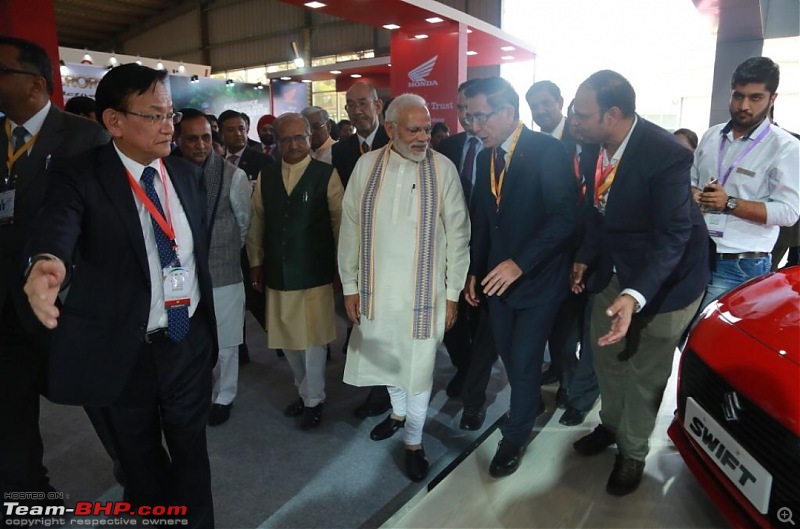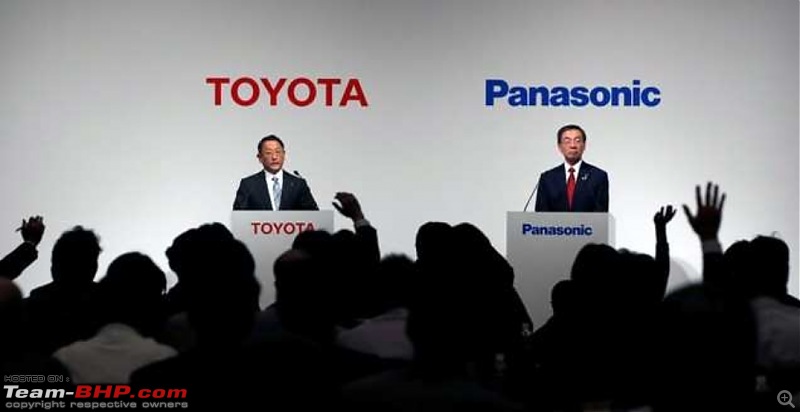| |||||||
| Search Forums |
| Advanced Search |
| Go to Page... |
 |
| Search this Thread |  4,585 views |
| | #1 | |||
| BHPian Join Date: Aug 2018 Location: 》
Posts: 477
Thanked: 2,235 Times
| Lithium Air Batteries with "2D materials" could offer 800 km range  Electric cars may clock up to 800 km on single charge ! WASHINGTON: Scientists say they have developed several two-dimensional (2D) materials which may enable electric vehicles to clock up to 800 kilometres on a single charge. Quote:
Quote:
Lithium-Air: A Battery Breakthrough Explained Quote:
And Now there is talk of Zinc Air Batteries to replace Lithium Patrick Soon-Shiong on 'holy grail' zinc-air battery Patrick Soon-Shiong, NantKwest CEO, chairman of NantEnergy and Los Angeles Times owner, discusses NantEnergy's new zinc-air rechargeable battery system that he hopes will eventually replace the lithium battery. These Battery developments will influence the automotive scene worldwide. Just like how the cellphone/mobile revolution took the Indian market by storm, Similarly the Electric Car revolution could influence the Indian Market on an unprecedented scale and much sooner than most people will anticipate. Although it will depend how soon the Indian Govt. and Major Car manufacturers develop the basic infrastructure needed for Fast charging. Last edited by JS Kwt : 12th January 2019 at 17:14. | |||
| |  (8)
Thanks (8)
Thanks
 |
| The following 8 BHPians Thank JS Kwt for this useful post: | dailydriver, deepakhon, digitalnirvana, GTO, MSAneesh, Rudra Sen, Samba, vivek95 |
| |
| | #2 | ||
| BHPian Join Date: Aug 2018 Location: 》
Posts: 477
Thanked: 2,235 Times
| Re: Lithium Air Batteries with "2D materials" could offer 800 km range Battery makers race to secure Australian lithium supply Quote:
Global Lithium Air Batteries Market Overview: Quote:
| ||
| |  (2)
Thanks (2)
Thanks
 |
| The following 2 BHPians Thank JS Kwt for this useful post: | dailydriver, digitalnirvana |
| | #3 | |
| BHPian Join Date: Aug 2018 Location: 》
Posts: 477
Thanked: 2,235 Times
| Re: Lithium Air Batteries with "2D materials" could offer 800 km range PM Modi Visits Maruti Suzuki's Pavilion At The 2019 Vibrant Gujarat Exhibition   Maruti Suzuki's MD, Kenichi Ayukawa and Toshihiro Suzuki, President, Suzuki explain the model To PM Modi Quote:
| |
| |  (2)
Thanks (2)
Thanks
 |
| The following 2 BHPians Thank JS Kwt for this useful post: | digitalnirvana, vivek95 |
| | #4 | ||
| BHPian Join Date: Aug 2018 Location: 》
Posts: 477
Thanked: 2,235 Times
| Re: Lithium Air Batteries with "2D materials" could offer 800 km range Tata group plans to invest in lithium ion battery manufacturing in Gujarat Quote:
Tata Motors showcases EV products at Vibrant Gujarat Summit  Quote:
| ||
| |  (2)
Thanks (2)
Thanks
 |
| The following 2 BHPians Thank JS Kwt for this useful post: | digitalnirvana, vivek95 |
| | #5 | |
| BHPian Join Date: Aug 2018 Location: 》
Posts: 477
Thanked: 2,235 Times
| Re: Lithium Air Batteries with "2D materials" could offer 800 km range BHEL, Libcoin to build India's first lithium-ion battery plant: Govt Quote:
| |
| |  (2)
Thanks (2)
Thanks
 |
| The following 2 BHPians Thank JS Kwt for this useful post: | digitalnirvana, vivek95 |
| | #6 | |
| BHPian Join Date: Aug 2018 Location: 》
Posts: 477
Thanked: 2,235 Times
| Re: Lithium Air Batteries with "2D materials" could offer 800 km range TOYOTA - PANASONIC announce venture for green auto batteries TOKYO: Toyota Motor Corp. and Panasonic Corp. are setting up a joint venture to research, manufacture and sell batteries for ecological autos, an increasingly lucrative sector amid concerns about global warming.  Quote:
Toyota, Japan's No. 1 automaker, is thought to have fallen behind rival Nissan Motor Co. in pioneering electric vehicles, and has been trying to catch up in recent years. Source | |
| |  (1)
Thanks (1)
Thanks
 |
| The following BHPian Thanks JS Kwt for this useful post: | digitalnirvana |
| | #7 | |
| BHPian Join Date: Aug 2018 Location: 》
Posts: 477
Thanked: 2,235 Times
| Re: Lithium Air Batteries with "2D materials" could offer 800 km range A nice read with an indian perspective A New World Order? Once the cost of the battery comes down, the automobile industry will change tack with lightning speed.  Author Shapur Kotwal talks about how the advent of electric cars will affect the Indian market and major carmakers worldwide. Quote:
| |
| |  (2)
Thanks (2)
Thanks
 |
| The following 2 BHPians Thank JS Kwt for this useful post: | digitalnirvana, V.Narayan |
| | #8 |
| BANNED Join Date: Dec 2007 Location: Gurugram
Posts: 7,969
Thanked: 4,788 Times
| Re: Lithium Air Batteries with "2D materials" could offer 800 km range Assume we succeed in developing these Li-Air batteries. Even then it may be 3-5 years before we see them in commercial production. And another year or two before we see them in cars. So we are looking at a lead time of six to seven years. |
| |  (2)
Thanks (2)
Thanks
 |
| The following 2 BHPians Thank sgiitk for this useful post: | digitalnirvana, JS Kwt |
| | #9 |
| BHPian Join Date: Aug 2018 Location: 》
Posts: 477
Thanked: 2,235 Times
| Re: Lithium Air Batteries with "2D materials" could offer 800 km range Volkswagen Group, Sweden's Northvolt and partners set up European Battery Union consortium The Volkswagen Group and other European partners are joining forces to form the European Battery Union (EBU) with a view to forging ahead with battery research throughout Europe. The new consortium is to be led by the Volkswagen Group and the Swedish battery producer Northvolt. Partners from research and industry in seven EU member states are joining forces in the European Battery Union consortium. The comprehensive research collaboration will range from raw material production, to cell technology and cell production processes and through to recycling. The research activities will also focus on the development and engineering of plant technologies allowing sustainable, climate friendly and competitive battery cell production in the European Union. All the partners will step up their investments as a result of the planned additional research activities. These investments could receive financial support from funding announced by the German Federal Ministry for Economic Affairs and Energy. https://t.co/Ic3w1kBloC https://t.co/pJeaHqJlqV |
| |  ()
Thanks ()
Thanks
 |
 |


